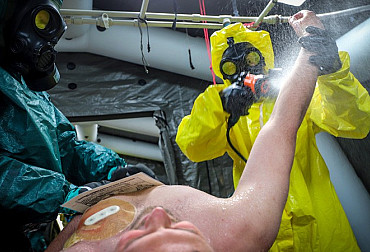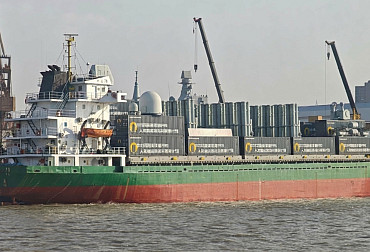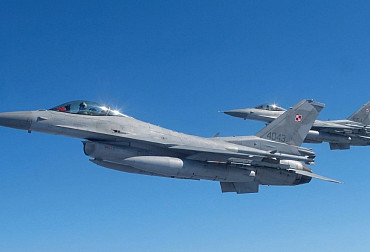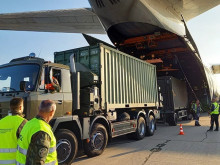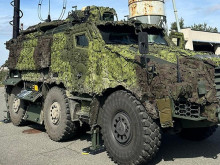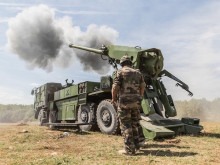Possibilities of Cooperation Between the Czech Republic and Poland in the Field of Defence Industry
The Army of the Czech Republic has been carrying out an intensive process of modernization for several years, from which the domestic arms industry benefits as well. Poland is taking similar steps, but in its case it is a much larger process, given by its different conditions and greater ambitions.
However, it is also an interesting opportunity for the Czech industry, as some modernization projects undoubtedly also represent great opportunities for the use of Czech products. It would be actually somewhat symbolic, as both countries had once worked together on the OT-62 TOPAS and OT-64 SKOT armoured personnel carrier programs. So which current initiatives of the Polish army could offer employment for the Czech armaments industry?
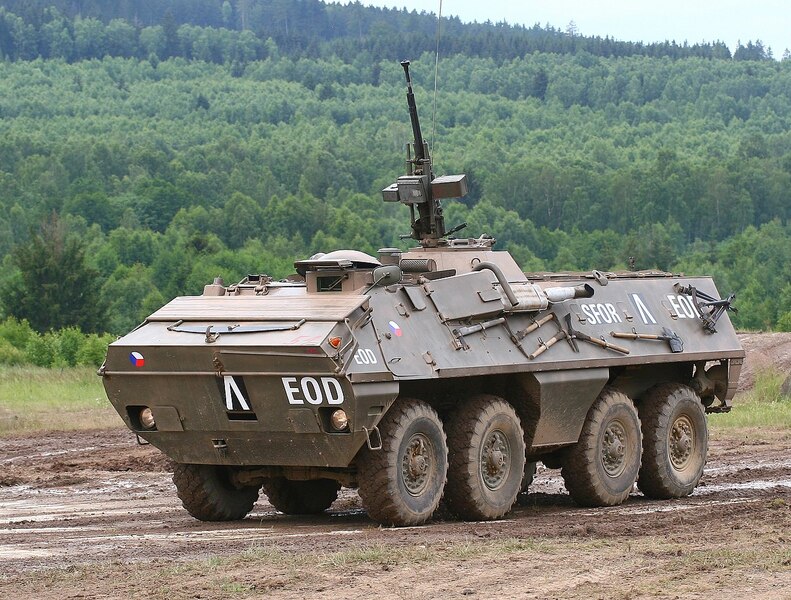
Picture: It would be actually somewhat symbolic, as both countries had once worked together on the OT-62 TOPAS and OT-64 SKOT armoured personnel carrier programs (pictured in museum OT-64 in ACR colours, SFOR mission) | Wikimedia Commons
Four-wheeled armoured vehicles
In the first place, of course, it is necessary to mention the Pegaz project, the plan to purchase 150 tactical multi-purpose armoured vehicles on a four-wheel chassis for special forces. In addition, the same type of armoured vehicle should be purchased for the Polish military police, in the number of 130 pieces. However, the list does not end there, as the Polish army has two other similar acquisition programs, which were named Kleszcz and Barakuda. The first one is a replacement for BRDM-2 armoured reconnaissance vehicles, while the second is a plan to find a replacement for wheeled tank destroyers, specifically for BRDM-2 vehicles in a variant equipped with anti-tank guided missiles. As part of the Kleszcz project, 250 vehicles are to be acquired, the number of armoured vehicles planned for the Barakuda project is not yet known. However, it is very interesting and, in fact, logical, that the army is considering to acquire one identical platform for all three of these projects, which would then be supplied in several purpose versions. The eventual winner could therefore count on contracts for more than 500 vehicles, but with Poland requesting most of the production on its territory, naturally. In any case, it is an extremely lucrative matter, and therefore several high-quality and prestigious applicants are applying for these projects.
Among them is also the armoured vehicle Husar, which is offered by the Czechoslovak Group in cooperation with the Polish arms factory Huta Stalowa Wola, which is part of the PGZ holding (Polska Grupa Zbrojeniowa). The basis of the vehicle is a proven four-wheeled Tatra chassis, which is based on the construction used in trucks. There is an armoured body on it, which was created as a product of Czech-Polish cooperation. A close relative of the Husar vehicle is the Patriot type, which is currently offered to the armed forces of the Czech Republic and Slovakia, but it should be emphasized that the Husar and Patriot vehicles are not identical despite their relation, as each is tailored to specific customer requirements.
.JPG)
After all, this can be mentioned as one of the main characteristics of this platform, which is designed with respect to universal use, or rather modularity. Hussar is equipped with an American Cummins engine, but another unit can be used according to the customer. It is also characterized by the possibility of changing the ground clearance of the chassis, which offers excellent mobility on the road and in the field. It can carry a wide range of manually operated and remote-controlled weapons, and in addition to the basic closed form, other versions can be created for various uses, such as open or two-seater cargo version. Hussar would undoubtedly be able to fulfil the assignment of the Polish projects Pegaz, Kleszcz and Barakuda.
Tracked armoured vehicles
Other interesting possibilities arise in the field of tracked armoured vehicles. Poland is implementing an ambitious project of the Borsuk infantry fighting vehicle, but it should be noted that every vehicle in this category today is an extremely complicated “jigsaw puzzle” that includes parts from tens or hundreds of suppliers. Thus, although Borsuk is primarily a Polish platform, it also contains many components of foreign origin. It would therefore be highly desirable for Czech companies to find employment as subcontractors. At this point it can be stated that elements of Czech production are already found in several foreign-made infantry fighting vehicles; these are, for example, cabling or headlights from the Ray Service company or protective seats for infantrymen. Czech companies are also at the forefront in the field of detection and protection against weapons of mass destruction, so a system like that could also appear in a Borsuk vehicle.
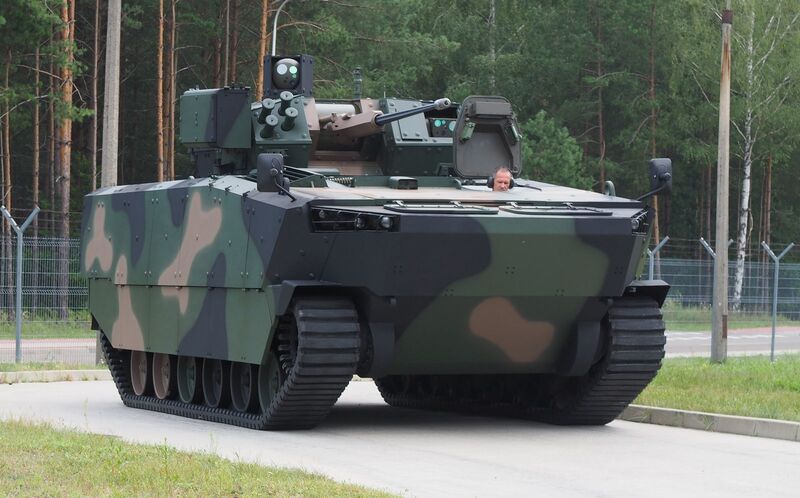
Picture: Czech companies are also at the forefront in the field of detection and protection against weapons of mass destruction, so a system like that could also appear in a Borsuk vehicle (pictured). | archive of Huta Stalowa Wola / CC BY-NC-SA
Furthermore, an analogous involvement can be considered in other Polish programs, such as the promising Wilk tank or Gepard light tank. The first case in particular is highly interesting from the Czech point of view, as it seems that the main candidate will be the K2PL armoured vehicle, a version of South Korean tank K2 Black Panther adapted to Polish needs. A similar solution is increasingly being talked about in the Czech Republic, so logically there is the possibility of close Polish-Czech cooperation on a new tank, which could include not only subcontracting of parts, but also joint licensed production.
Self-propelled artillery
Establishing cooperation between the Czechoslovak Group and the Huta Stalowa Wola company also has great potential in the field of self-propelled artillery, which is one of the main areas of operation of this Polish company. The HSW portfolio includes, for example, the Kryl self-propelled howitzer, which is a 155mm gun on the chassis of a Jelcz truck, but of course its installation on a Tatra chassis can also be considered. As the Polish manufacturer also has great export ambitions, the possibility of installing the Kryl howitzer on a proven chassis of a prestigious Czech brand would undoubtedly increase the commercial potential of the entire weapon system.
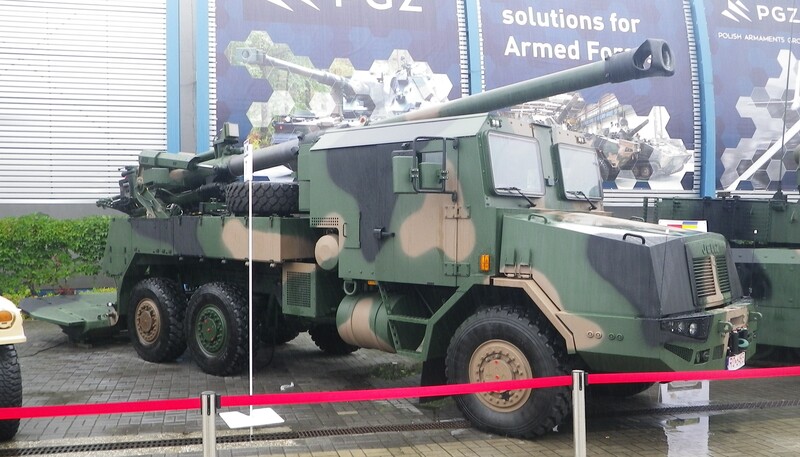
Picture: The HSW portfolio includes, for example, the Kryl self-propelled howitzer, which is a 155mm gun on the chassis of a Jelcz truck (pictured) | Wikimedia Commons
It could be similar with other systems, such as the 122mm WR-40 Langusta rocket launcher. And, of course, we can mention the fact that the Polish army continues to be one of the major users of self-propelled howitzers DANA, which in Poland are referred to as wz. 1977. There are over a hundred pieces in operation, which should undergo a comprehensive modernization, which logically represents another great opportunity for cooperation between Poland and the Czech Republic. The Czechoslovak Group has already offered the Polish party a modernization program based on the DANA M2 design. According to the customer’s interest, a number of elements can be implemented, including a modern fire control system, a more powerful engine, a body with better ergonomics or a faster-running system of hydraulic supports.
.JPG)
Trucks
The already mentioned prestigious Czech car maker Tatra has a very good reputation in Poland as well, which is probably related to the geographical location of Kopřivnice near the Polish border. In the past, the Polish army has taken a large number of Tatra heavy trucks, some of which are still in operation. Of course, the traditional domestic car maker Jelcz also works in Poland, but it mostly produces trucks of light and medium weight category with chassis with a maximum of eight wheels and a total weight of up to about 30 tons, while Tatra is able to produce longer and heavier vehicles.
.jpg)
Picture: Of course, the traditional domestic car maker Jelcz also works in Poland, but it mostly produces trucks of light and medium weight category with chassis with a maximum of eight wheels and a total weight of up to about 30 tons, while Tatra is able to produce longer and heavier vehicles. | archive of Tatra Defence Vehicle / Public domain
If the Polish army planned to introduce weapon, sensor, support or any other systems for which the capacity of Jelcz vehicles would not be enough, it would have to find a different option abroad. For a number of technical and political reasons, it would be optimal to prefer Czech chassis. At this point, it can be added that the Polish Army (as well as the Army of the Czech Republic) also needs to replace a number of its engineering means, such as bridge and pontoon vehicles. It is here, of course, that great application possibilities are offered for Tatra vehicles or for bridge and other engineering systems of the General Dynamics brand, which are usually also mounted on the chassis of the Kopřivnice car manufacturer.
Other possibilities of cooperation
However, the potential for cooperation between the Czech and Polish defence industries is certainly not limited to armoured or unarmoured vehicles and self-propelled artillery. Many other fields can also be considered in which Czech brands could establish mutually beneficial cooperation with Polish industry. These could be for example systems of the C-RAM and C-UAS categories, the means of protection against artillery weapons and drones. Among the Czech products that could be used in this way is for example the compact 3D radar ReGUARD, which can also fulfil a number of other roles. Electronic jammers by URC Systems, among others, could serve as effectors of the anti-drone system. Opportunities for cooperation with Polish counterparts could be found also for Czech suppliers of ELDIS and RETIA radars (the latter also supplies the ReGUARD complex), or for ERA, which manufactures world-successful passive surveillance systems. Undoubtedly, a wide potential is also found in the category of unmanned aerial and ground vehicles, as in both countries there are very interesting projects of this kind, such as Czech aircraft of the CANTAS series or Polish “waiting ammunition” Warmate, so some of them could certainly be implemented together. Undoubtedly, one can also imagine cooperation in promising fields such as 3D printing, nanotechnology or artificial intelligence.
In addition to these specific examples of projects of weapon and other systems, it would be worth it to consider cooperation with mutual sharing, or rather securing production and service capacities. In case of need (or emergency), Polish and Czech companies could substitute one another’s capacities, e.g. in the field of artillery ammunition supplies or vehicle maintenance. It can be said that both countries (with a certain exaggeration) would provide each other with a kind of rear or strategic depth, which could also be extended to analogous cooperation with Slovakia. The cooperation of the defence industries of the Central European countries undoubtedly has not only great technical potential, but also represents one of the important dimensions for wider strategic cooperation, which suggests itself due to their close or almost identical security interests. Given the pessimistic forecasts of Europe’s development, such a solution should certainly be seriously considered, as it would benefit all parties.
















